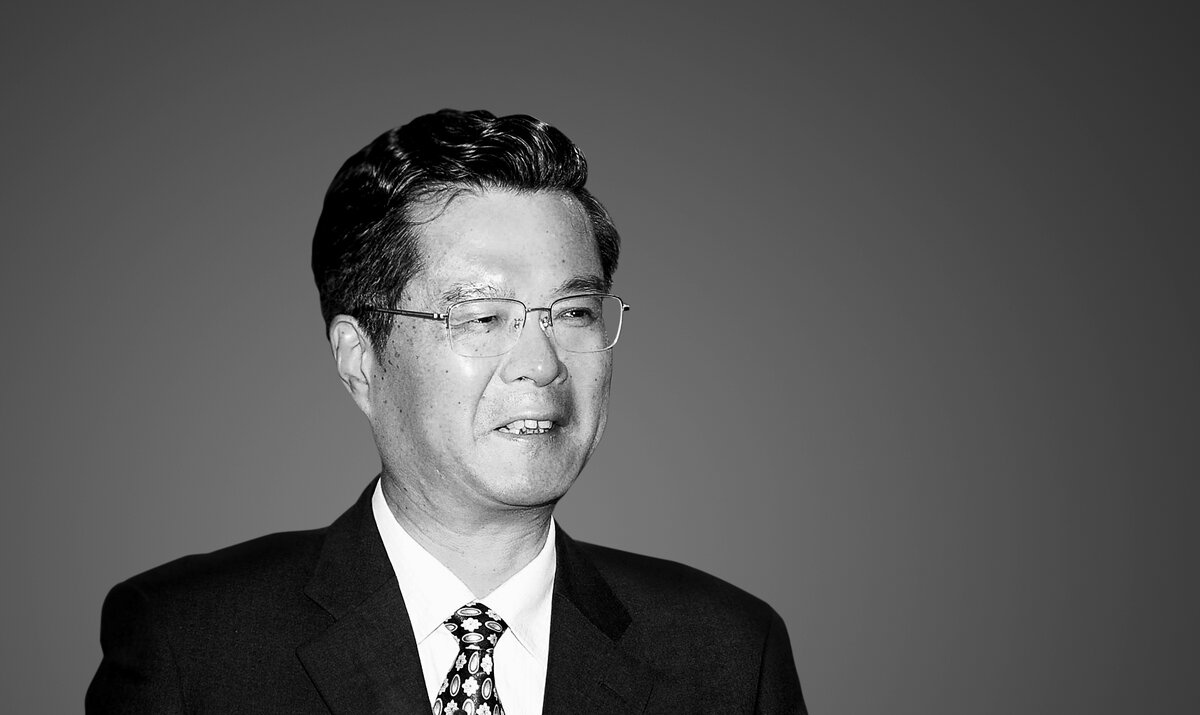Hu Hongtao

Good health must be regional
Hu Hongtao on South-South cooperation (SSC), the changing Chinese population landscape, and the perils of paddling.
In 2016, Hu Hongtao retired from a busy and rewarding 35-year career in population, family planning, and international cooperation. His plans were to take up fishing, vegetable gardening and other rural pursuits. But his plans were short-lived; he received a call from the Chair of Partners in Population and Development (PPD) and Minister of the National Health and Family Planning Commission of China, who said to him, “like it or not, you cannot run away from us. We need you at PPD”. PPD, an intergovernmental organization promoting South-South cooperation, came into being at the International Conference on Population and Development (ICPD) in Cairo in 1994, and comprises 26 member countries.
A senior advisor at PPD, Mr. Hu is a strong believer in the power of collaboration between developing countries. Indeed, he went on to take a position with a similar focus in the Chinese government, as advisor on SSC in population and development to the National Health Commission of China There are common issues many developing countries face, he says, referencing newly ageing populations, the ongoing pursuit of women’s rights, and the migration of young adults to urban areas, with all the attendant needs for social support and healthcare that these particular issues bring.
His mentor at UCLA encouraged him to return to China to “do something for your people” and looking back, Mr. Hu has no regrets
Mr. Hu’s career in population and family planning began in 1981 in the early stages of China’s population and family planning program. The government sent him first to the School of Public Health at the University of New South Wales in Sydney, Australia, in 1982 and then to the School of Public Health at the University of California, Los Angeles (UCLA), USA in 1985. His mentor at UCLA encouraged him to return to China to “do something for your people” and looking back, Mr. Hu has no regrets.
He has witnessed the evolution of China’s family planning policy over the last four decades. Mr. Hu says that when the universal two-child policy was introduced in 2015, demand for contraception did decline, but not as dramatically as some may have expected. The contraceptive prevalence rate went from about 88% in 2013 to just under 81% in 2017, which is still significantly higher than the 69.4% prevalence in developing countries in general. There’s nothing to rule out its rise in the future, Mr. Hu says. At the same time, the focus on family planning has widened steadily over recent years and China’s priorities now take in a spectrum of women’s health issues including maternal mortality, maternal and child health, and life expectancy at birth.
When Africa is in trouble, we are all in trouble.
This emerging perspective is in keeping with the country’s ambitious Belt and Road Initiative, a Chinese proposal to build a Silk Road Economic Belt and a 21st Century Maritime Silk Road in cooperation with related countries. While the initiative is largely economic, health issues are also a key priority. China is supporting the construction of a centre for disease control in Africa, based in Addis Ababa. When the Ebola epidemic was at its height, Mr. Hu remembers colleagues leaving for West Africa to troubleshoot the situation. “When I said goodbye to them, I didn’t know whether they would return safely; this was a very moving experience. Luckily, they all came back in good health. Diseases like Ebola are the enemy not just for African residents, but for all people. When Africa is in trouble, we are all in trouble.”
On the subject of manufacturing, Mr. Hu is quick to remind everyone that China is the world’s largest contraceptive producer. Despite linguistic challenges and regulatory barriers, Chinese manufacturers are keen to break into the international market but occupy a negligible share of the international market. One barrier that has proven to be a major obstacle for many Chinese manufacturers has been WHO prequalification. Despite the success of major companies like Shanghai Dahua and Zizhu, for many small-scale manufacturers, the process is simply overwhelming. Mr. Hu’s hope is that the successes of Dahua and Zizhu can be modelled and shared with smaller companies. The prequalification issue for Chinese manufacturers is a longstanding one which has “turned my hair grey,” he says, but he counts on the Coalition, with its vast network and convening skills, to support Chinese manufacturers in these ways.
Indeed, Mr. Hu happens to be one of the Coalition’s biggest champions. When Coalition Director John Skibiak was eager for the Chinese government to come on board, Mr. Hu asked him to “give me five good reasons for China to join the Coalition”. Mr. Skibiak was able to provide not five, but 10 reasons, and Mr. Hu, convinced, arranged for the China Contraceptive Supplies Administration (CCSA) to represent the government. The CCSA has been a strong and supportive partner since joining in 2011, serving a two-year term on the Executive Committee, helping convene a high-level roundtable in Beijing in 2015, and representing the Chinese government at RHSC membership meetings.
Despite ongoing challenges such as those faced by manufacturers, Mr. Hu remains optimistic and passionate about work in population and reproductive health. He admits to burning the midnight oil, approaching his work as if living on borrowed time. He credits this urgency to his early childhood. He grew up in rural Jiangsu, the “land of fish and rice”, criss-crossed by waterways. When a fortune teller told his grandmother that he would not live to be 10 years old, his terrified family kept him indoors for two whole years in fear that he would drown in a river; they once spanked him when they once found him paddling in a stream.
Mr. Hu smiles as he recounts this memory, and speaks fondly of his childhood, “poor and simple, where there wasn’t enough to eat or wear”. Had it not been for his staunch commitment to the SSC, he would today be tending his vegetable plot and practising photography, he says. But he says this with a chuckle, and it is clear he relishes the challenges ahead.

The availability of safe, affordable supplies that meet men’s and women’s RH needs. Supply availability is possible only when products feed into the supply chain and make their way to the point-of-distribution, where women and men can access them.


